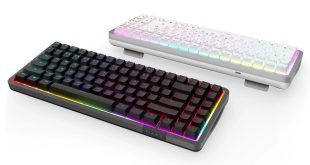To test today, we are using a LaCie calibration gun along with specific software to accurately measure the readings.
We also tested the VG23AH under ‘real world conditions’ via one of the HDMI connectors paired up with a high end Core i7 laptop featuring Nvidia Quadro 4000M discrete graphics.
The screen surface is not highly reflective meaning that it is easy enough to view under a wide variety of environmental lighting conditions.
We measured the Gamut out of the box in sRGB mode and the VG23AH panel returned a reading of 2.16 which is a decent result. We manually adjusted the gamma to 1.8 and the screen returned a 1.77 result.
Colour response from this panel was quite good, with a minor 2% red cast across the image area.
We measured 95% coverage of sRGB which indicates good colour performance for artists and designers. That said, the Asus PA248Q ProArt delivered much better results.
Colour accuracy throughout testing was not exceptional for an IPS panel and we would class the VG23AH as only slightly above average. Off axis performance is strong however and we measured 176° angles with only very minor colour shift.
Black Definition is quite good, although there is a shift between +10% and +25%, this is slightly noticeable to the naked eye. The outer edges register up to 30%, specifically in the corners. It is noticeable and slightly distracting with high definition media featuring black backgrounds, such as science fiction material. There is also a slight shift patch with our review sample, across the center line, offset to the right.
This pooling is not easy to notice with the naked eye, but once we found it, it was rather difficult to ignore. With only one sample at hand it is hard to tell if we just ended up with a weak sample in this regard.
We tested under real world conditions with the bluray disc of Sunshine and noticed fairly high shifting across the full width of the panel. The edges of the panel looked a very dark grey, rather than a pure black which can make such material even more enjoyable.
Asus use a system called Smart Contrast Ratio which is said to deliver 80,000,000:1 and 250 Cd/m² of brightness.
White purity delivered an average result. There is a 10-15 percent shift across most of the panel, meaning that a pure white will never look that ‘clean'. At the edges this rises to around 20% with some areas close to the corners around 25%. There is some pooling, recordable in the extreme edges … this falls short of the PA248Q which we tested in early July.
Uniformity is average and bleeding is slightly noticeable. Colour Fluctuation was maintained quite well, with minor fluctuation and emphasis on the red channel.
For gaming, I didn’t notice any concerns to the naked eye. ASUS rate the panel at 5ms (GTG). This is a panel which is built for gaming however and the concerns listed above are less important when playing a first person shooter.
We tested the screen with native 3D content running via a GTX680 and the results were excellent. The FPR 3D glasses don't flicker at all thanks to the fact they receive the images for the left and right eye simultaneously. ASUS have designed these themselves and the quality is first class. The screen is much more impressive when dealing with 3D content, than 2D.
We measured brightness of 244 cd/m².
The ASUS VG23AH Monitor demanded 28 watts after calibration which is an excellent result for an IPS screen.
 KitGuru KitGuru.net – Tech News | Hardware News | Hardware Reviews | IOS | Mobile | Gaming | Graphics Cards
KitGuru KitGuru.net – Tech News | Hardware News | Hardware Reviews | IOS | Mobile | Gaming | Graphics Cards






They gave themselves no room to suceed with this. 250 for all this? its bound to suffer in some areas.
I used this actually at a clan event in England and it was alright. Another guy next to it had an illyama and it was much better.
I agree with james, the price is too low for all this. of course the proart will be better, its £50 more and it doesnt ship with glasses or any 3d functionality.
These need to cost more to be as good or close to the leading 2D IPS screens.
I normally hate Dell, but this is a good indication of why ASUS need to stick to motherboards and graphics cards. Dell all the way for me in regards to screens.
Yup.